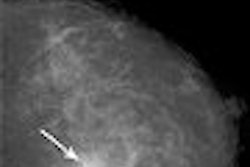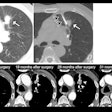Although it's rumored that the shortage of radiologic technologists has eased somewhat in the U.S., technologists trained to conduct specialized high-end imaging procedures such as magnetic resonance angiography (MRA), computed tomography angiography (CTA), or vascular ultrasound are still at a premium. Faced with a dearth of such talent in the Los Angeles market, the University of California, Los Angeles (UCLA) implemented an innovative approach to maximizing the intellectual and technological skills of its MRA-trained techs: MRI scanning by remote control.
"As MRI has evolved and its applications have expanded to new areas, such as cardiovascular imaging, the level of specialization required of the scan operator has grown accordingly," said Dr. John Finn of the department of radiology at UCLA. "Cardiovascular MRI, specifically, involves increasingly powerful but operationally complex technology."
Finn presented results from a UCLA study on the use of remote-controlled cardiovascular MRI at the 2005 RSNA conference in Chicago.
He noted that many MRI centers have an insufficient number of trained technologists to meet the growing demand for specialized MR studies, and that the deficiency is becoming more acute. In addition, in many practices, the MR systems are physically distributed over a wide area, further complicating scheduling, coverage, and service by a specialized technologist. At UCLA, for example, 12 magnets are dispersed at various locations throughout the campus and surrounding area.
Finn's research team set out to establish the efficacy of remote scanning by MRI for cardiovascular procedures from a central hub and to compare the quality of images from the remote exams compared with similar exams performed locally.
The team enabled password-protected secure intranet broadband connectivity among a central control server and five Siemens Medical Solutions (Malvern, PA) Magnetom Sonata MRI systems (four 1.5-tesla units and one 3-tesla unit), all within a six-mile radius and within the UCLA healthcare system.
The group utilized custom-configured Virtual Network Computing (Real VNC, Cambridge, U.K.) software running on Microsoft Windows XP to make it possible to emulate other computers from a central control server. The application enabled the researchers to clone the MRI scanner console, such that the remote operator and the local technologist (at the machine) had simultaneous and equal access to the scanning interface in real time, according to Finn.
"The remote-control scanning procedure involved a phone conversation between the local technologist and the remote operator, who asked permission to log on," Finn said. "The local technologist remained responsible for all aspects of patient safety, preparation, positioning, monitoring, communication, surface coil and IV line placement, and contrast administration."
The remote operator was responsible for all aspects of protocol selection, sequence parameter changes, field-of-view settings, slice positioning, and orientation, Finn said. Both remote and local operators had equal access to the user interface at all times. In essence, the local operator voluntarily handed over control of the MR system to the remote operator.
Thirty consecutive patients were scanned successfully, including 16 children with complex congenital heart disease and 14 adults presenting with various cardiac symptoms, including suspected aortic dissection, myocardial infarction, and mesenteric ischemia. The patients had a total of 42 cardiac MRI and oral contrast MRA studies of the chest, abdomen, and pelvis performed, Finn said.
The researchers reported that the mean scan time was 46.7 minutes for children (range 20-55 minutes) and 49.3 minutes for adults (range 20-68 minutes), with no difference in scan duration between the remote control and locally conducted scans.
The images were compared with age-matched controls with similar studies using the same MRI hardware and software configuration. The same operator performed all 40 remote-controlled studies, as well as eight of the local studies, Finn noted.
Image analysis was conducted by consensus between two specialist cardiovascular imagers, Finn said. The images were rated on a scale of 1 to 4 for quality and motion artifact; vascular definition was rated on a scale of 0 to 3 for almost 500 individual vascular segments.
"As regards overall image quality, the remote scans were rated higher than local scans, with 90% of the cases earning a rating of excellent," Finn said.
No statistically significant difference was found between remote and local scans in terms of motion artifact. Vessel definition was, on average, better on the remote than the local scans, he reported.
The researchers believe that the functionality holds promise for remote support of sites that don't have local imaging expertise, training, or supervision, and for quality control in the clinical or clinical trials setting. In the meantime, Finn has his sights set on expanding the capabilities of remote-control MRI.
"For future work, we need to define the necessary IT resources for extending these capabilities to a regional or global implementation," he said. "We're also going to be looking at other accessories such as audio feeds and video cameras, and, potentially, remote contrast injection."
By Jonathan S. Batchelor
AuntMinnie.com staff writer
January 13, 2006
Related Reading
Studies showcase MRA at its best in arteries and combined with CAD, November 17, 2005
How to find and train a 3D technologist, June 17, 2005
MRA shows good results in detecting coronary stenosis, March 7, 2005
RT vacancy rate falls, ASRT survey says, December 2, 2004
RTs are already tackling advanced tasks, survey says, August 15, 2003
Copyright © 2006 AuntMinnie.com



















